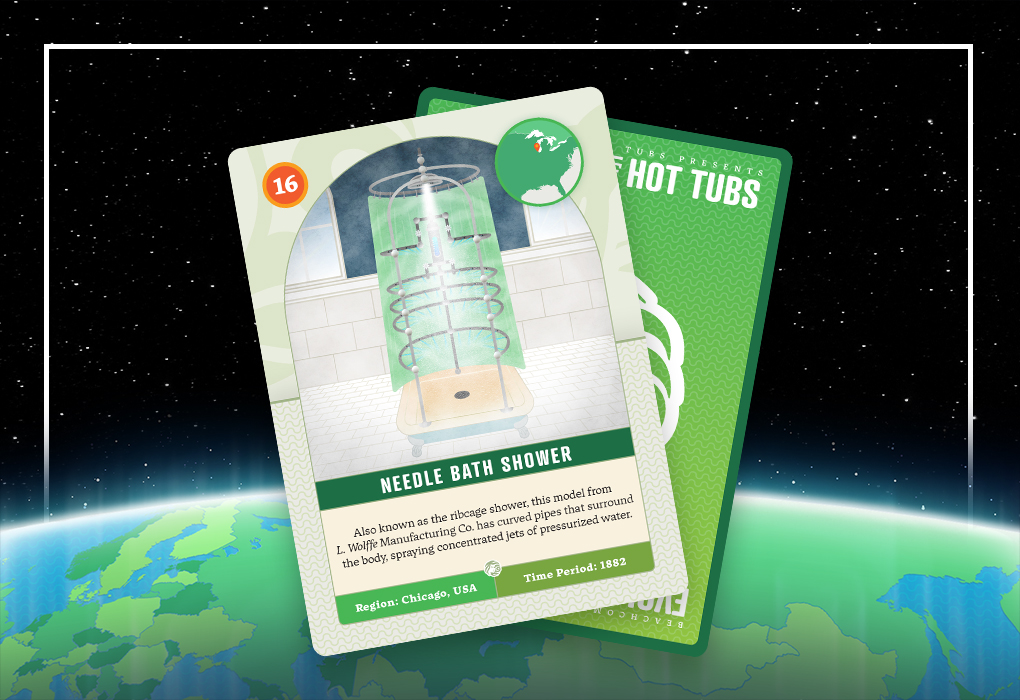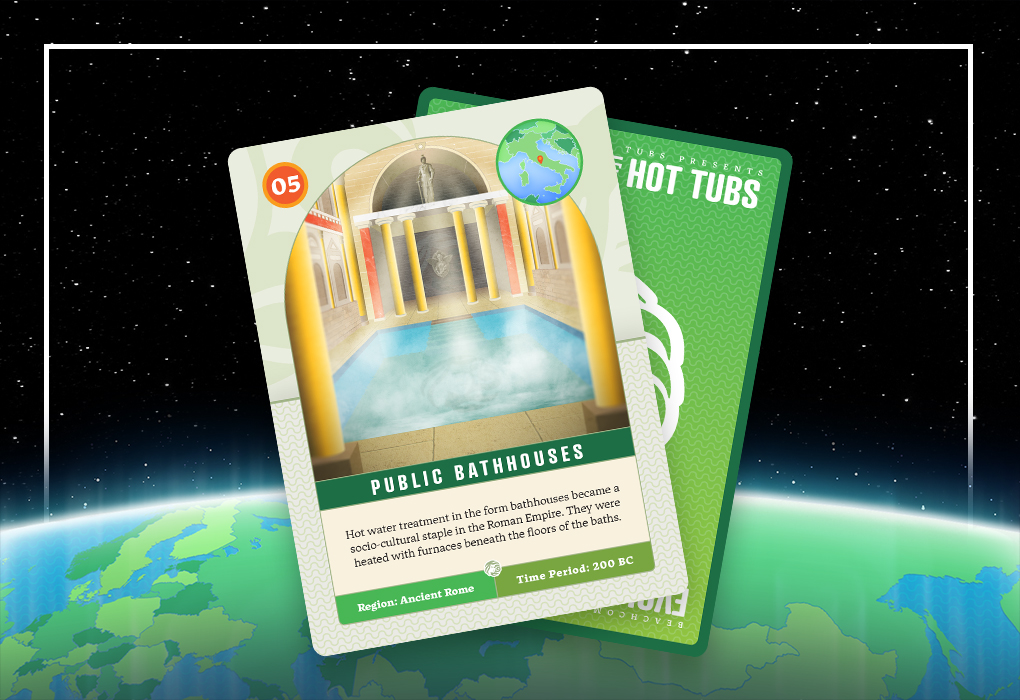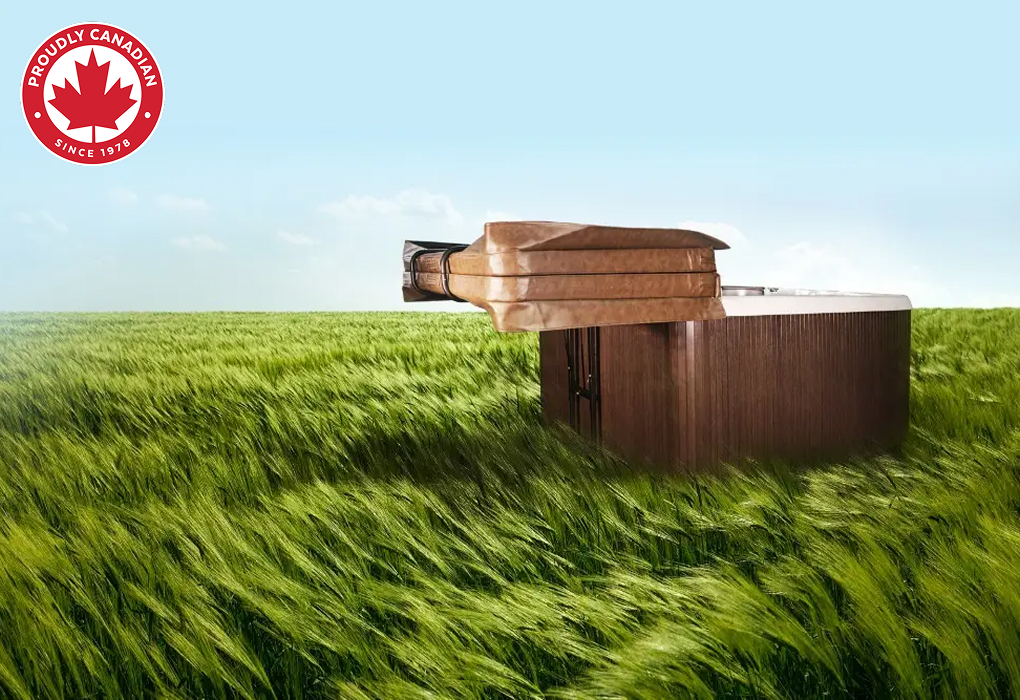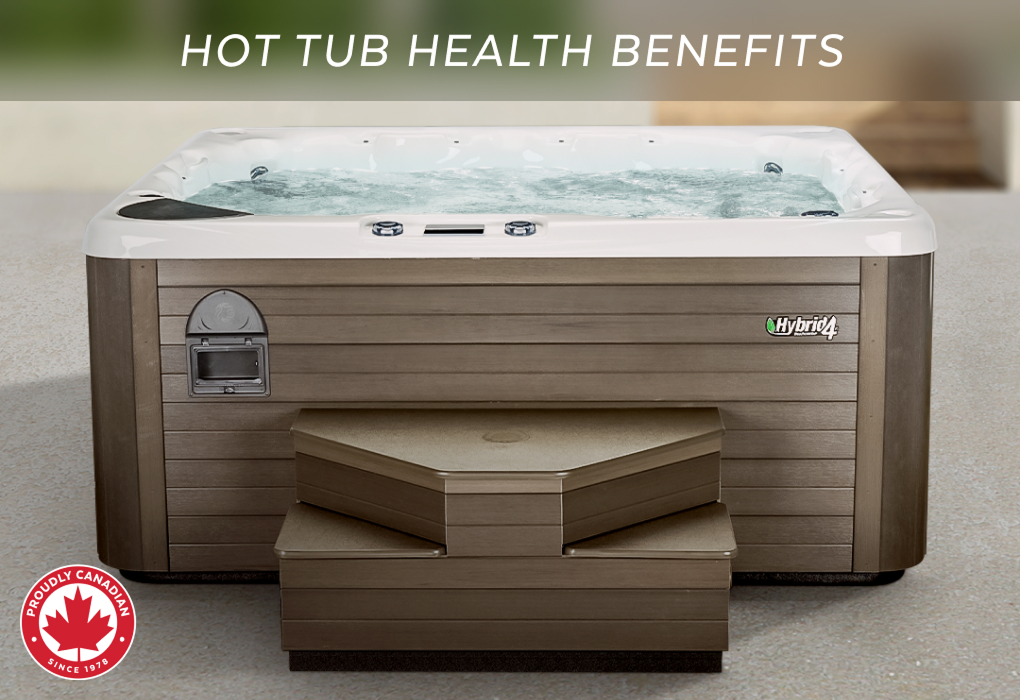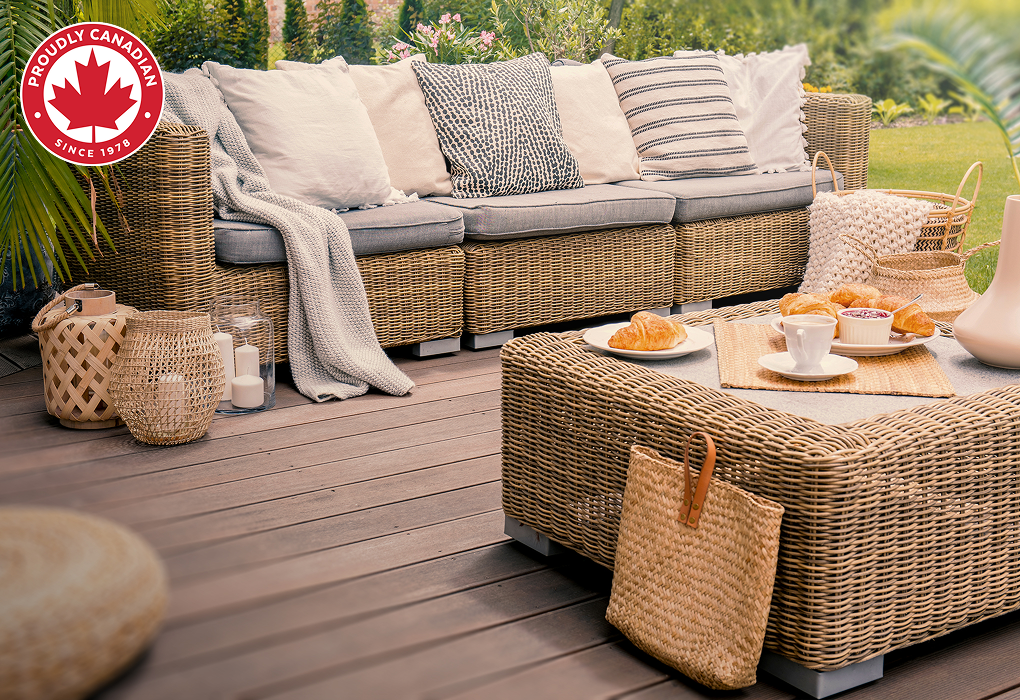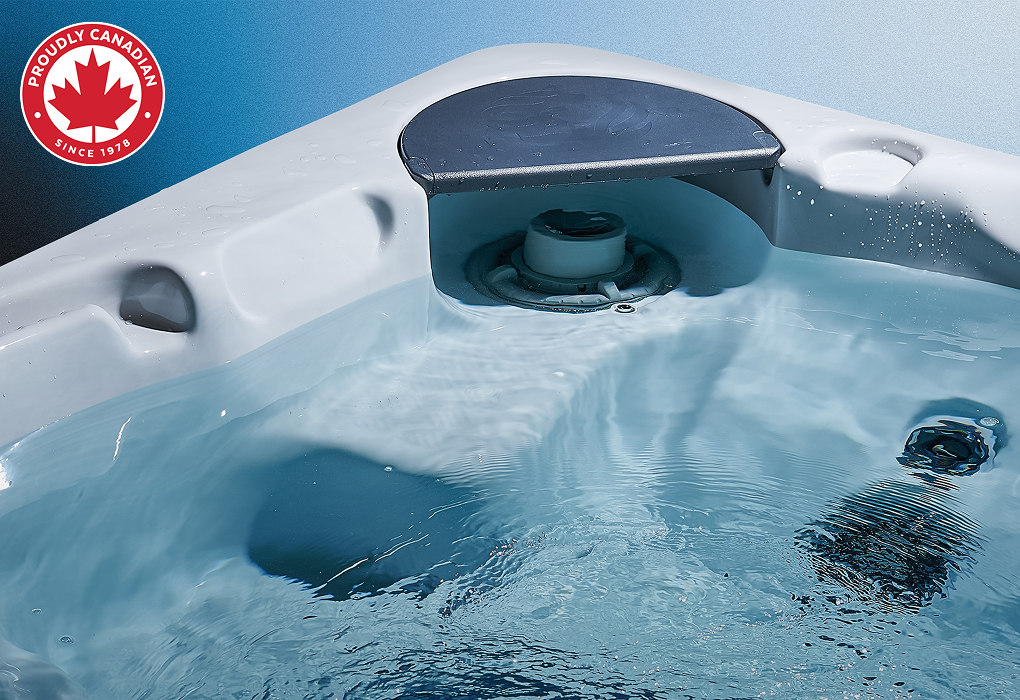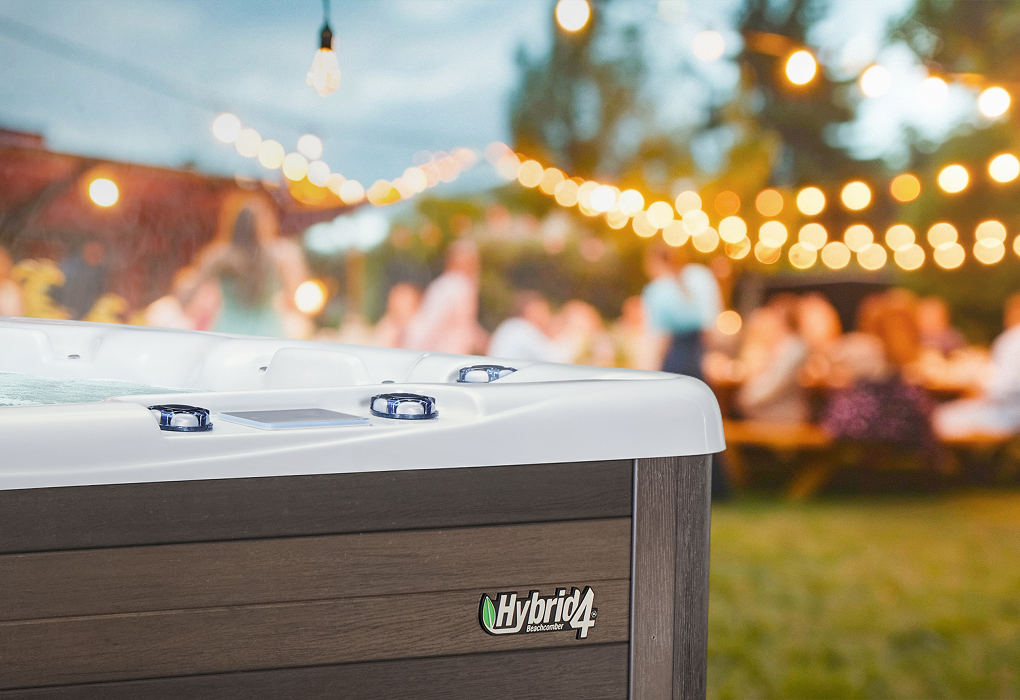There were many developments in the way people bathed and washed after the beginning of balneotherapy. One such change was the introduction of ribcage or needle bath showers. Unlike previous showers and baths in the home, these contraptions consisted of many taps and valves where the user could adjust the temperature and water flow. Prior to the needle bath shower, most people just dumped pales of water over themselves as they washed.
The History
Ribcage showers became popular in the late 1800’s. It was one of the first designs of an official shower, with plumbing and valves to control the water, its temperature, and the flow. Other developments followed, such as the rain bath shower, combination shower, and canopy shower.
-
Ribcage or needle bath shower:
This shower was built in a way where jets were positioned all around the torso so they could hit the body at all different angles. It was believed that these jets could stimulate the internal organs with a massage. They were generally found in gentlemen’s athletics clubs and private homes of those who were well off. They became popular in the 1880’s.
-
Rain bath shower:
This shower had an overhead nozzle that sprayed water over the user, much like the modern-day shower. It was also known as a spray bath and was viewed as more hygienic and modern than ribcage showers. Because of the beliefs around hygiene, rain bath showers were often found in hospitals and public bathhouses from the late 1800’s.
-
Combination shower:
These combined features of both the ribcage and rain bath showers and were often very well decorated and designed. They led to the development of the canopy showers.
-
Canopy shower:
These were mostly found in bathrooms in homes, and were generally just available to well-off buyers in the late 1800’s. It was a tub made of porcelain enamel, and it was shaped like a tall shower wall with a hood. The canopy showers had a bath at the base and a shower to stand in. They were normally quite ornamental and polished, and sometimes they had jets throughout just like ribcage showers.
The evolution from ribcage to canopy showers meant that there was more emphasis on the functionality of the shower head and jets.
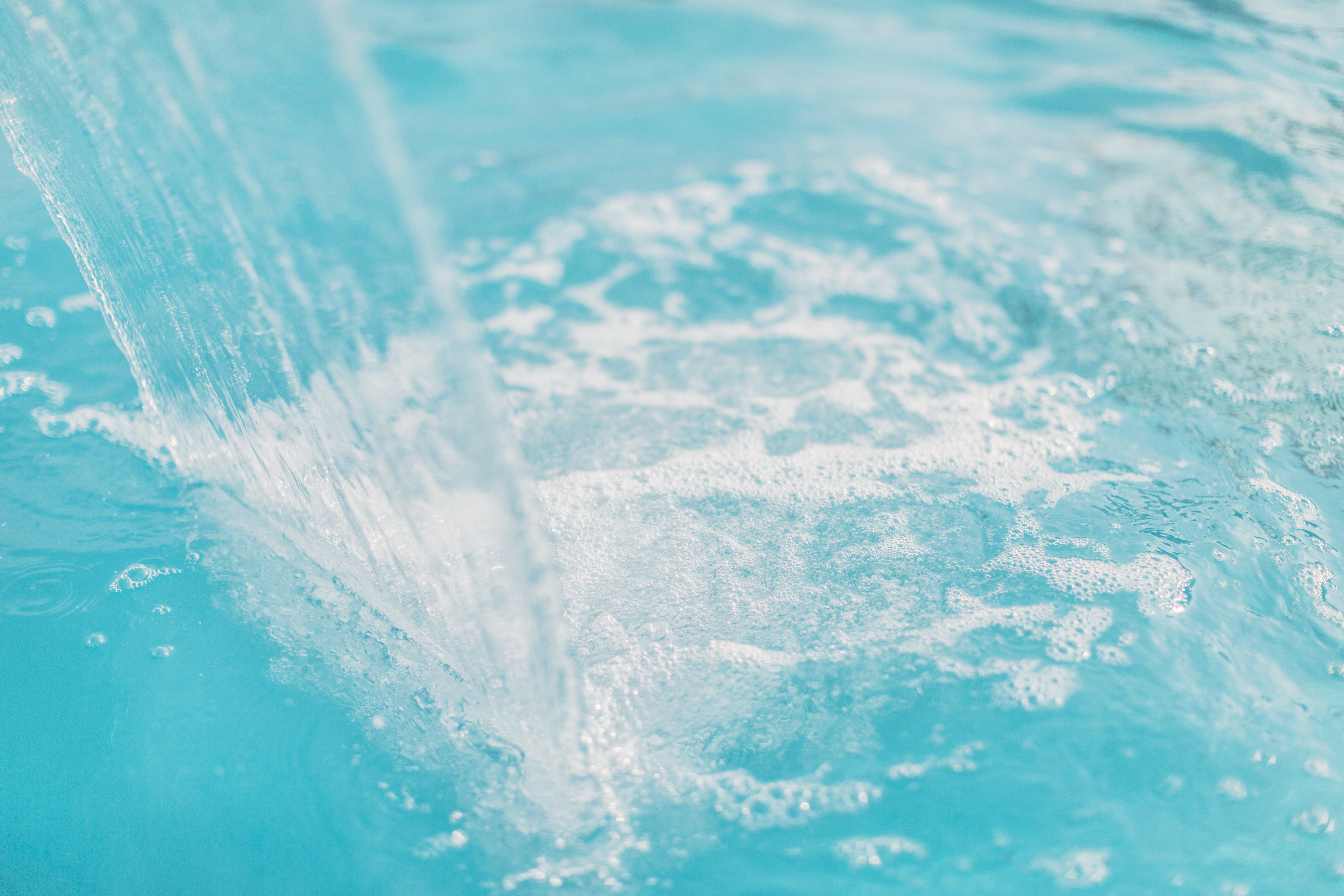
The Impact on Hydrotherapy and Hot Tubs
Developments in showers to add jets and the ability to control the pressure meant that more people were able to target areas of pain or tightness. The research conducted throughout history into how water therapy benefits the body and mind resulted in people prioritizing healing their bodies, internally and externally. This meant there was more though put into the careful and specific design of showers and baths.
The jets of the needle bath shower can be compared to the jets of a hot tub – perfect for massaging the aching parts of the body, loosening muscles, and bringing peace to the user. By situating the different water flows at different points, it allows the user to focus on problem areas. This is like a hot tub in that hot tubs have customizable jets that can be placed exactly where the bather most needs it.
These developments in the late 19th century and moving into the early 20th century meant more emphasis than ever was put on the importance of hydrotherapy for healing and balance within the body. It was encouraged by research and actions in the past, such as preserving parks with thermal springs. As we get closer to modern-day, we can see how the theories surrounding water therapy eventually led to the hot tub.
Follow along with our timeline by downloading our infographic and signing up to our newsletter here!

